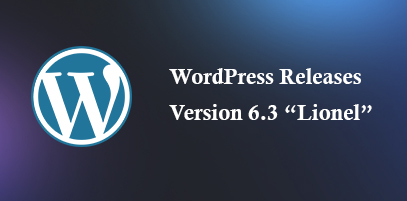Static Vs Dynamic Website: Understand the Difference
By :- Tiana - Web Guru Awards Team

Static vs dynamic website; the iconic debate of most UI designers and developers! Out of numerous options available for designing, building, and customising, static and dynamic websites are popular ones.
Before knowing which one is a better option, you need to know what's the difference between the two. While they may appear the same, both differ from each other in several ways. Here’s a quick guide:
Static Websites: Advantages and Disadvantages
A static website, as the name signifies, has a static approach. It includes a confined number of web pages with rigid layouts and contents. This means users see the same content over and over.
These types of websites are made through HTML, CSS, and JavaScript. There are no changes in the information, regardless of the user. Due to their basic characteristics, static websites are easy to make. There are no scenarios of programming or database designing. Right now, numerous people are going back to static websites for their contribution to higher performance.
Advantages:
-
One of the best benefits of static websites is that they can be created faster and are more secure.
-
Thanks to their faster loading capacity, they are ranked higher on the search engine.
-
Unlike dynamic websites, static websites do not need advanced technologies and software for creation.
-
In the case of static websites, you can easily alter the designs/layouts.
-
They are also cost-efficient and easy to use.
-
To keep the elements intact, the basic code of a static website can be imitated.
-
They are also easy to restore during any malware attack or crash.
Disadvantages:
-
It's a bit tough to update static websites. So, many people don't even try, and their website remains un-updated.
-
As they do not have anything extravagant, it may be tough to render a unique user experience.
Dynamic Website: Advantages and Disadvantages
Unlike static websites, dynamic websites are not confined to limited content. Instead, they display several types of content to the users. Simply put, the content changes. Note that these changes depend on the user's language preferences, time zone, time of the day, location, etc. To create a dynamic website, one has to be well-informed about server-side programming languages viz, C#, PHP, and Python. It also employs a CMS or external database for content. When these criteria or norms meet a good web development agency like WebFox, it results in the perfect dynamic website.
Advantages:
-
Dynamic websites ensure a unique user experience and serviceability to attract the audience.
-
It offers an outstanding interface where information can be stored well orderly.
-
As compared to static websites, dynamic websites are more reasonable.
-
Not only does it attract users and visitors, but it also permits multiple users to regulate the content.
-
It is also easy to update as well as maintain.
Disadvantages:
-
Extra elements like site foundations and database connections can cost more. Hence, it could eventually become more expensive than a static website.
To Conclude
Hopefully, now you know the difference between static and dynamic websites! With this knowledge, you can proceed with your website development.
Recent Topics
-
 WordPress.com Launches 100-Year Web Hosting Plan
WordPress.com Launches 100-Year Web Hosting PlanWordPress, the platform that helps people create websites, now offers something rare. It has taken a bold leap into the future with its 100-year web hosting plan. Yo...
Read MoreBy :- Laura Davidson
-
 5 Best AI Web Design Tools You Can Try
5 Best AI Web Design Tools You Can TryWhy bother with all the effort of creating websites manually when we have amazing AI tools? In fact, using these tools has become one of the most-practiced ...
Read MoreBy :- Tiana K
-
 Role of Animation and Micro-Interactions in User Experience
Role of Animation and Micro-Interactions in User ExperienceIn today's world, almost every brand wants to create a user-friendly interface for its customers. The main aim behind this is to increase customer base and revenue. Now, when it comes...
Read MoreBy :- Laura Davidson
-
 Web Design Trends to Watch Out for in 2024
Web Design Trends to Watch Out for in 2024Web design is a constant-evolving technology landscape. As a web designer, staying tuned with web design trends and keeping your designs up-to-date is important. These trends will affect ...
Read MoreBy :- Esther McGuinness
-
 The Power of Storytelling in Web Design Engaging Users with a Narrative
The Power of Storytelling in Web Design Engaging Users with a NarrativeStories never fail to engage listeners. That’s why web designers are leveraging the art of storytelling in their designs. In web designing, storytelling goes beyond merely usin...
Read MoreBy :- Navkiran Dhaliwal
-
 WordPress Releases Version 6.3 ?“Lionel”
WordPress Releases Version 6.3 ?“Lionel”WordPress 6.3 “Lionel” is out! Now, you’ll be able to create more beautiful and compelling websi...
Read MoreBy :- Tiana K
